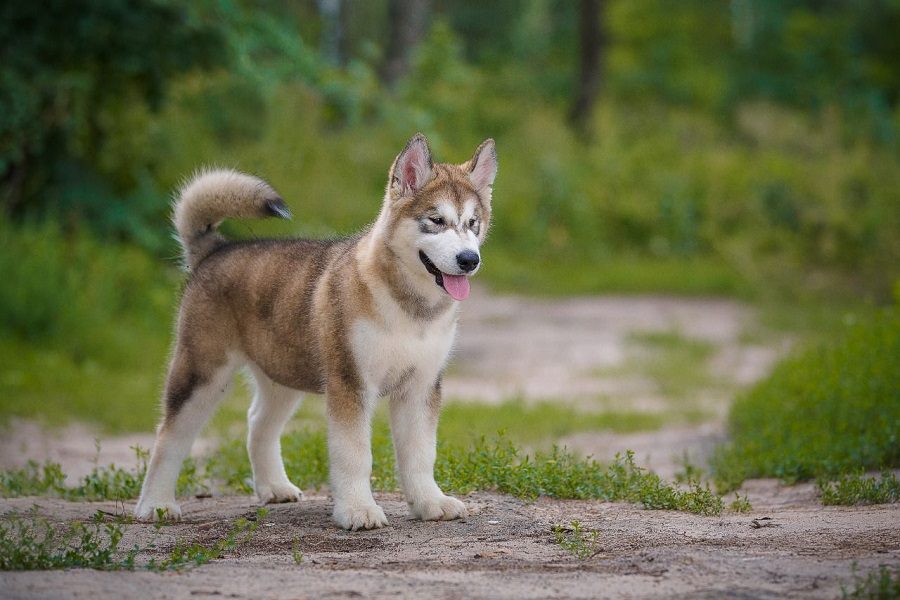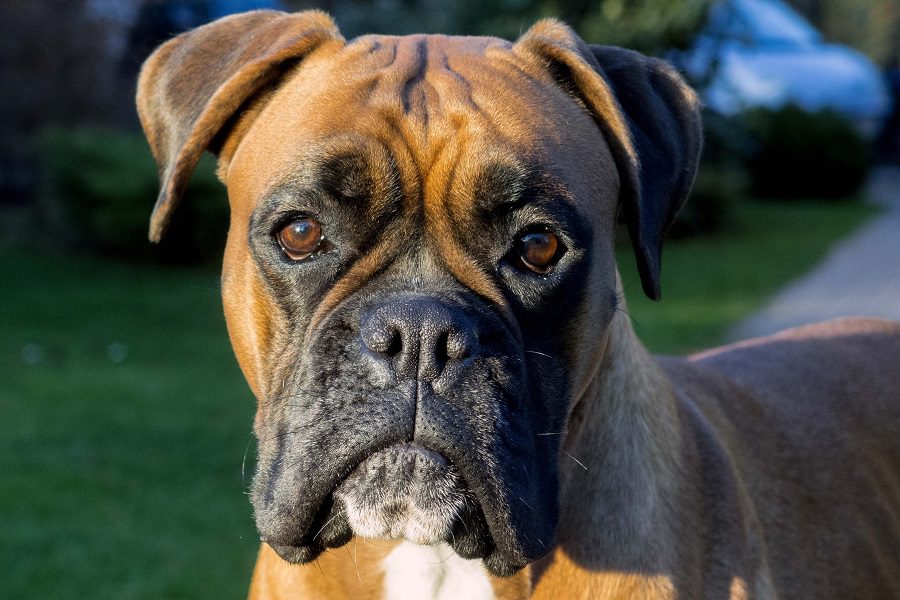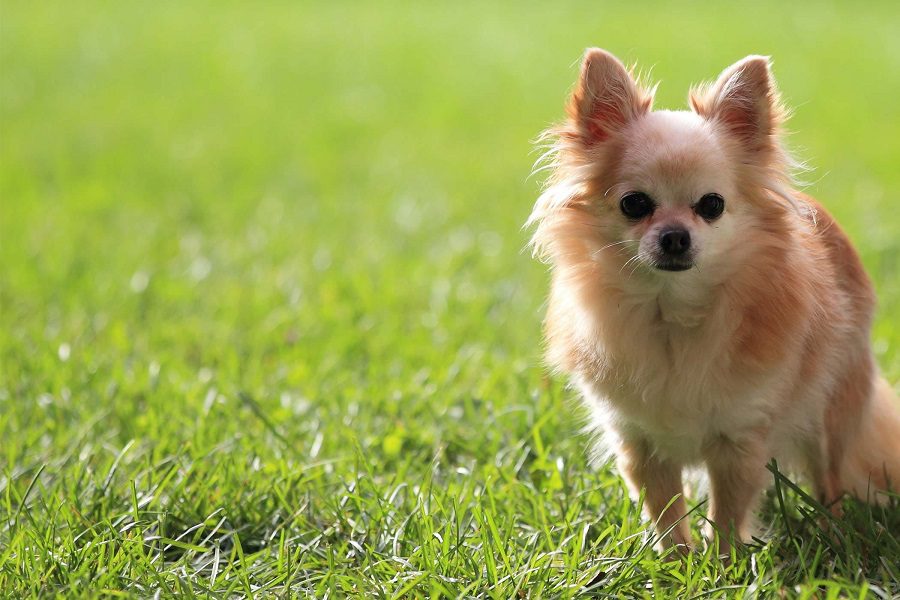Last Updated: 2 years ago
Pugs are a wonderful breed with a great personality.
They’re the comedians of the dog world. But there are some important things to be aware of before you decide to bring a pug into your home.
In this guide, we’ll cover the basic information you need to know to make an informed decision about getting a pug.
Physical Characteristics
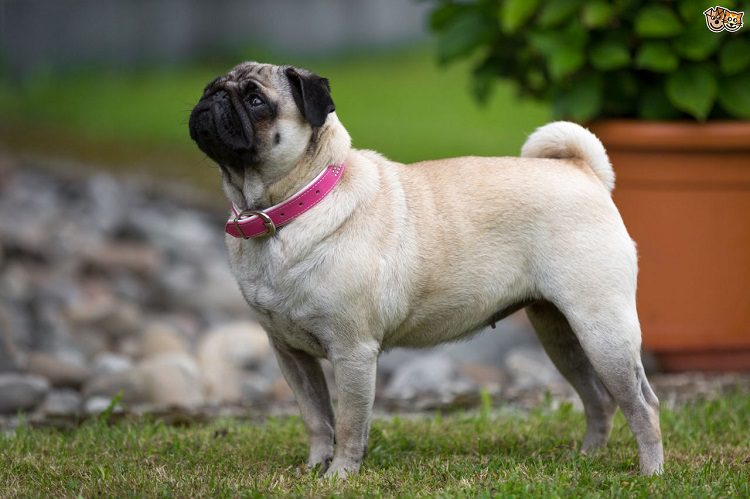
Pugs are a small breed of dog that don’t get bigger than about 10–12 inches. By adulthood, they will weigh between 14 and 18 pounds. They have short, squished faces that are simply too cute to resist and an adorable little tale that curls upward.
The most frequently seen coloring is a mostly beige or cream coat with black fur around the face and ears.
But there are some that are all black. Their fur is very short, making them very easy to groom, but they do tend to shed a lot. Take a look at our gallery of this funny-looking breed.
Personality and Temperament
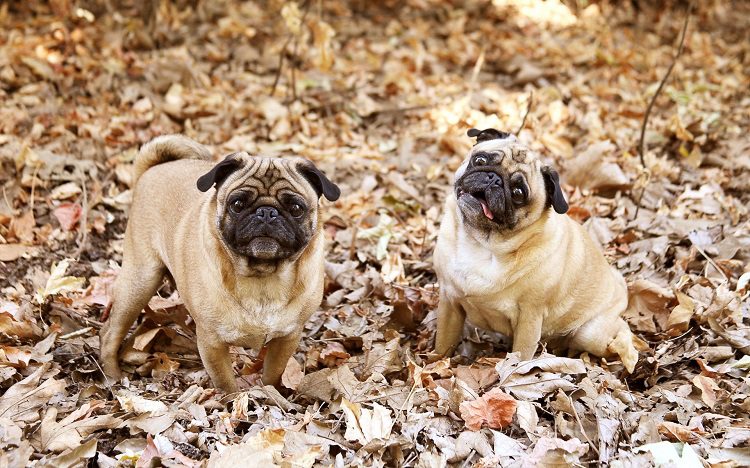
Pugs are great companions. They love being around their humans and showing off. They are very friendly, affectionate, and great with kids.
That said, they are also highly dependent on human interaction, so if you are planning to leave your pug alone for more than an hour or two, it will get lonely and very anxious, which can mean some damage to your home.
But if you know you will be able to spend plenty of time with it or that there will almost always be someone with your pug, it will make an absolutely wonderful addition to the family.
Common Health Issues
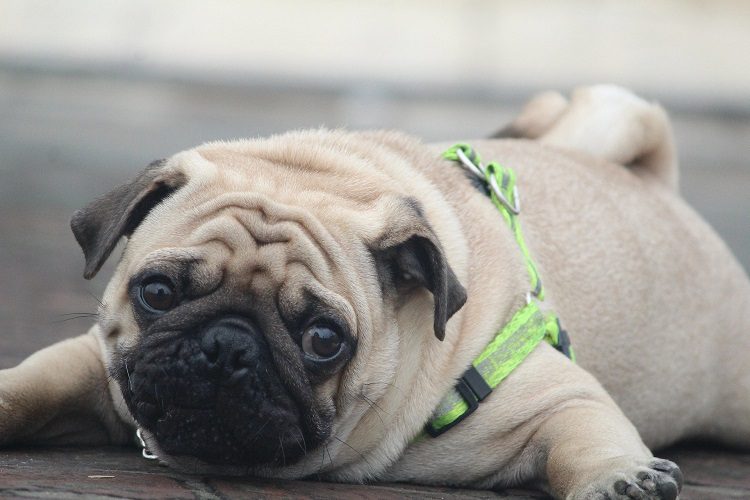
Pugs can live a long, happy life, but they are prone to some serious health problems that you need to be on the alert for to make sure you catch conditions early.
Here are a few of the main issues:
Pug Dog Encephalitis
This is an inflammation of the brain that typically strikes when pugs are between 2 and 3 years old. The causes are unknown, but you can recognize them by seizures, lethargy, poor coordination, agitation, pressing the head against objects, and pacing in circles.
Unfortunately, there are no effective treatments, and it is fatal. But you can make your dog more comfortable before he goes.
Canine Hip Dysplasia
This condition is genetic and causes abnormal joint structure, weak support, and separation of the bones in the hip joint.
usually appears early on (between 4 months and 1 year). So it’s important to be extra alert and look for signs of painful movement: stiff hind legs, limping (or favoring one leg), trouble getting up or sitting down, and reluctance to play or walk.
Treatment involves weight management, low-impact exercise, massage, medication, and some nutritional supplements.
Obesity
Pugs are a fairly low-energy breed that likes to sleep a lot. This makes them very prone to obesity.
So it’s important to manage their diet to make sure they don’t eat too much. And if they start to get overweight, make an effort to get them exercising more.
Skin problems
Particularly, the wrinkles on their face are prone to rashes and other problems, so extra effort must be made to keep their skin clean and dry.
They are also more sensitive to heat than other breeds, so they may not be the best choice if you live in a particularly hot climate.
Basic Care Instructions
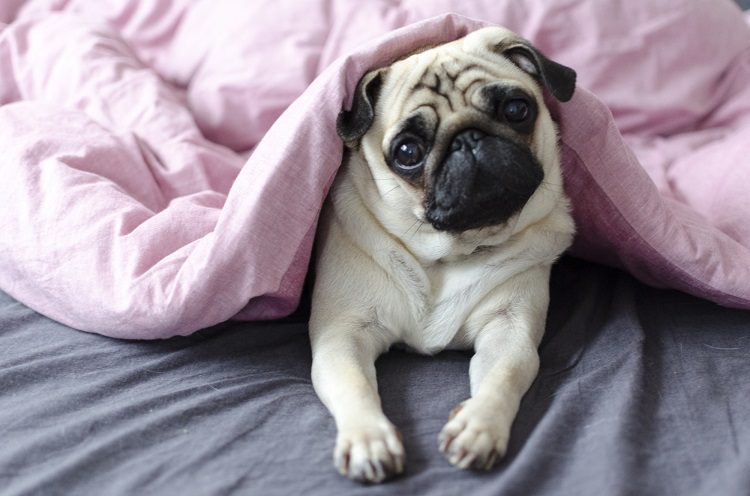
Your pug should be mostly kept indoors because they are extremely sensitive to both heat and cold.
But you will want to either take them on one 30-minute leashed walk per day (or 30 minutes of playing) to make sure they get enough exercise.
While there is minimal grooming required, you will want to clean and dry the pug’s face wrinkles on a regular basis in order to prevent infection or other skin problems.
Beyond that, brushing once a month or so should be more than enough.
You can opt to brush your pug more often in order to minimize shedding.
If you get a puppy, be aware that pugs take longer to be housebroken. So be prepared to spend anywhere from 4 to 6 months on consistent training. We recommend getting an older, already housebroken pug to avoid this stress.
In terms of feeding, you should feed your pug somewhere between ½ a cup and 1 cup of quality dry food per day.
We recommend dividing this into at least two meals; otherwise, your pug will scarf it all down in the morning and be begging for more by evening.
Pugs are prone to obesity, so if you notice your little guy getting on the pudgy side, you should either cut back on his food or make an effort to increase his activity level (for example, by getting a dog treadmill).
If you don’t control food portions and exercise levels for your pug, he will just eat and eat and eat and then lay around, being lazy. So it’s up to you to make sure your pug leads a healthy lifestyle.
Final Word
Pugs are ideal for small apartments and homes or people who don’t have the time to provide an especially active lifestyle for their dog.
They are fairly low-maintenance on that front. However, they tend to have more health problems than other breeds, and they do shed a lot despite having short fur.
We think their lovable personality and adorable appearance make them worth the risks, and a lot of their health problems can be prevented or managed by diet, exercise, and proper grooming.
Resources:

